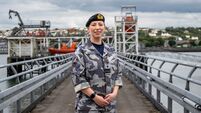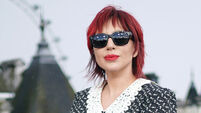The day I met the first lady of hell: Bashar al-Assad's wife, Asma

Asma al-Assad, second left, listens to her husband Syrian President Bashar al-Assad in 2014. File picture: AP Photo/Hassan Ammar
LATE IN THE afternoon of December 1, 2010, I got a call from a features editor at Vogue. She asked if I wanted to go to Syria to interview the first lady, Asma al-Assad.
“Absolutely not,” I said. “I don’t want to meet the Assads, and they don’t want to meet a Jew.”
The editor explained the first lady was young, good-looking, and had never given an interview. Vogue had been trying to get to her for two years. Now she’d hired a PR firm, and they must have pushed her to agree.
“Send a political journalist,” I said. “We don’t want any politics, none at all,” said the editor, “and she only wants to talk about culture, antiquities, and museums. You like museums. You like culture. She wants to talk to you. You’d leave in a week.”
A week: clearly my name was last on a list of writers that the first lady had rejected because they knew nothing about Mesopotamia. I didn’t consider the possibility that the other writers had rejected the first lady.
“Let me think about it,” I said. I had written four cover stories that year, three about young actresses and one about a supermodel who had just become a mother. This assignment was more exciting.
I looked up Asma al-Assad. Born Asma Akhras in London in 1975 to a Syrian cardiologist, Fawaz Akhras, and his diplomat wife, Sahar Otri. Straightforward trajectory. School: Queen’s College. University: King’s College. Husband: president of Syria.
My notions about the country were formed by the British Museum: the head of Gudea, king of Lagash, treasures from Ur, Mesopotamia, Sumer, Assyria, and Babylon — all of which had occupied what is now Syria. Both Aleppo and Damascus had been continuously inhabited for more than five millennia.
This was where civilisation was born, 6,000 years ago. I knew the country’s more recent past was violent, and secretive. The dictator Hafez al-Assad took power in 1970 and, until his death in 2000, ran the country as cruelly and ruthlessly as his idol Stalin. He was an Alawite; he dealt with a Sunni Muslim Brotherhood uprising in Hama in 1982 by killing 20,000 of its men, women, and children.
Bashar al-Assad looked meek. He’d been studying ophthalmology in London in 1994 when his older brother, the heir to the presidency, died in a car accident. Bashar was brought home, and groomed for power.
At Hafez’s death, a referendum asked whether the 34-year-old Bashar should become president. There was no other option. He “won”. At first he was perceived as a reformer, but his only reforms were to do with banking.
Under Bashar al-Assad, Syria was still oppressed, but the silence and fear were such that little of the oppression showed, apart from vast numbers of secret police, called Mukhabarat.
Syria and Hezbollah were the suspects in the 2005 car-bomb murder of the former Lebanese prime minister Rafik Hariri. Damascus was home base for Hezbollah and Hamas; Syria was close to Iran.
But these alliances also made Syria a viable interlocutor for the West, even a potential conduit to peace in the Middle East. In December 2010, Obama had just named a new ambassador, the first since George W Bush had broken off diplomatic relations in 2005.
In 2010 Syria’s status oscillated between untrustworthy rogue state and new cool place. A long 2008 piece on Damascus in the British Condé Nast Traveller described its increasing hipness. It was the Soviet Union with hummus and water pipes. In the worldview of fashion magazines, Syria was a forbidden kingdom, full of silks, essences, palaces, and ruins, run by a modern president and an attractive, young first lady. Nancy Pelosi and John Kerry had visited, as well as Sting, Angelina Jolie, Brad Pitt, Francis Coppola. It was also a Pandora’s box. Syria was a dictatorship, which was the default mode throughout the region.
I called Barbet Schroeder, who’d made the ultimate documentary about a dictator, General Idi Amin Dada.
“Hafez al-Assad was the worst evil genius in the world, but I think his son is trying to be a reformer,” said Schroeder.
Someone who had a house in Aleppo said that Asma al-Assad was a bright, energetic woman, to all appearances English, who drove herself everywhere. And, unlike other heads of state he knew, “the Assads really care about their people”.
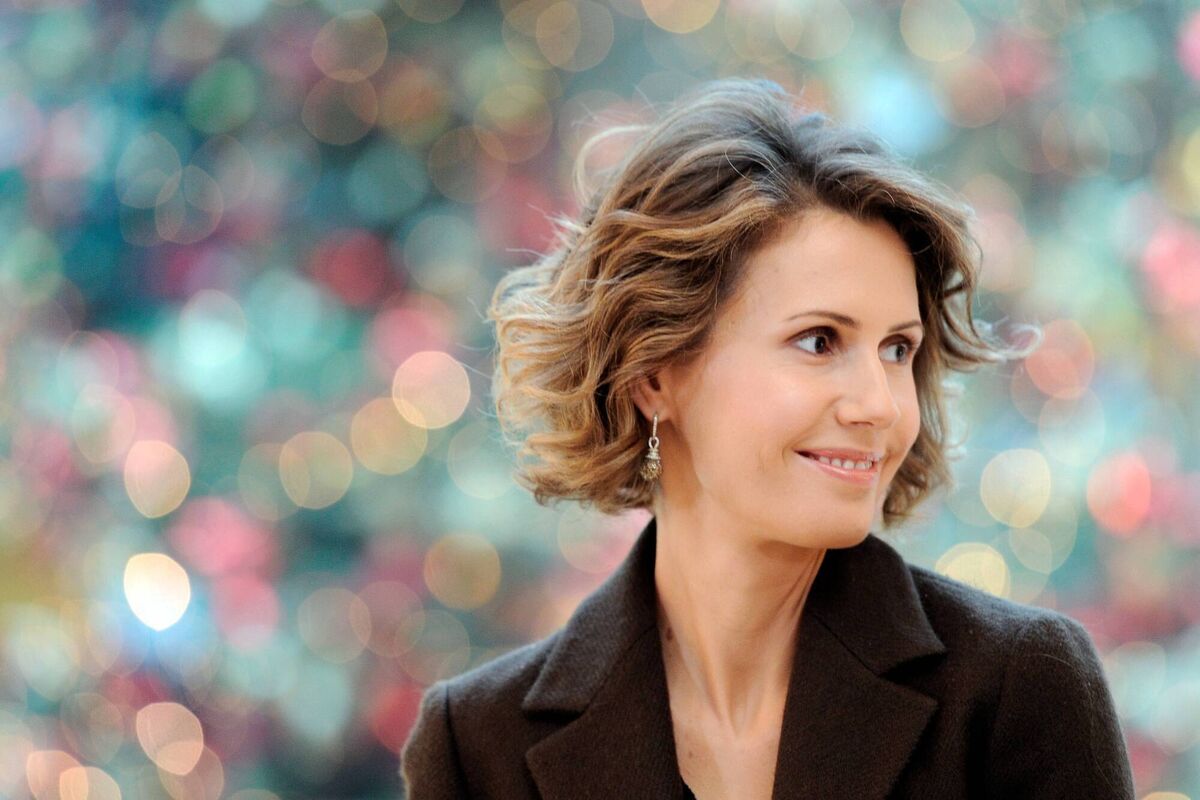
An aesthete, who went to Syria for its ruins, raved about Damascus, mentioned in passing some men seen hanged outside the Four Seasons Hotel, and then raved about Palmyra.
I should have said no right then.
I said yes. It was an assignment. I was curious. That’s why I’d become a writer. Vogue wanted a description of the good-looking first lady of a questionable country; I wanted to see the cradle of civilisation. But what was the worst that could happen? I would write a piece for Vogue that missed the deeper truth about its subject. I had learned long ago that the only person I could ever be truthful about was myself.
I didn’t know I was going to meet a murderer.
There was no way of knowing that Assad, the meek ophthalmologist and computerloving nerd, would kill more of his own people than his father had and torture tens of thousands more, many of them children.
In December 2010, there was no way of knowing that the Arab Spring was about to begin, and that it would take down the dictators of Tunisia, Libya, and Egypt.
There was no way of knowing, as I cheered the events in Tahrir Square, that I would be contaminated because I had written about the Assads. There was no way of knowing that this piece would cost me my livelihood and end the association I had with Vogue since I was 23.
I met the devil and his wife, with full fashion-magazine access to their improbable fishbowl apartment where they lived out their daily lives on display to the eyes of thousands, like a Middle-Eastern version of The Truman Show. They showed off their fantasy lives for me.
The Assads’ PR firm, Brown Lloyd James, took care of my visa. In the offices, flat-screen televisions mounted on walls played only Al Jazeera — one of their clients, along with Gaddafi’s son Saif and the government of Qatar.
We sat with Brown’s associate Mike Holtzman. They brought in their intern, a 22-year-old named Sheherazade Ja’afari, the daughter of the Syrian ambassador to the United Nations. She and Holtzman would be in Damascus with me.
I landed in Damascus in the snow late on the night of December 12, 2010. Sheherazade was waiting on the runway in a government car.
The next day Sheherazade took me through Damascus; in the dark early-evening streets, I felt uneasy. Moustached men stood in our path, wearing shoes from the 1980s and curiously ill-fitting leather jackets over thick sweaters.
Two days later, December 14, I left my laptop on the desk.
A government car conveyed us to the first lady’s office, a fairly anonymous little white building in a residential neighbourhood. I was to meet her alone.
Asma al-Assad was informal and cheery. A good-looking woman of 35, she wore a pale blue jacket and dark trousers. Her curly chin-length hair was sprayed into place, her eyebrows delineated in the Syrian manner.
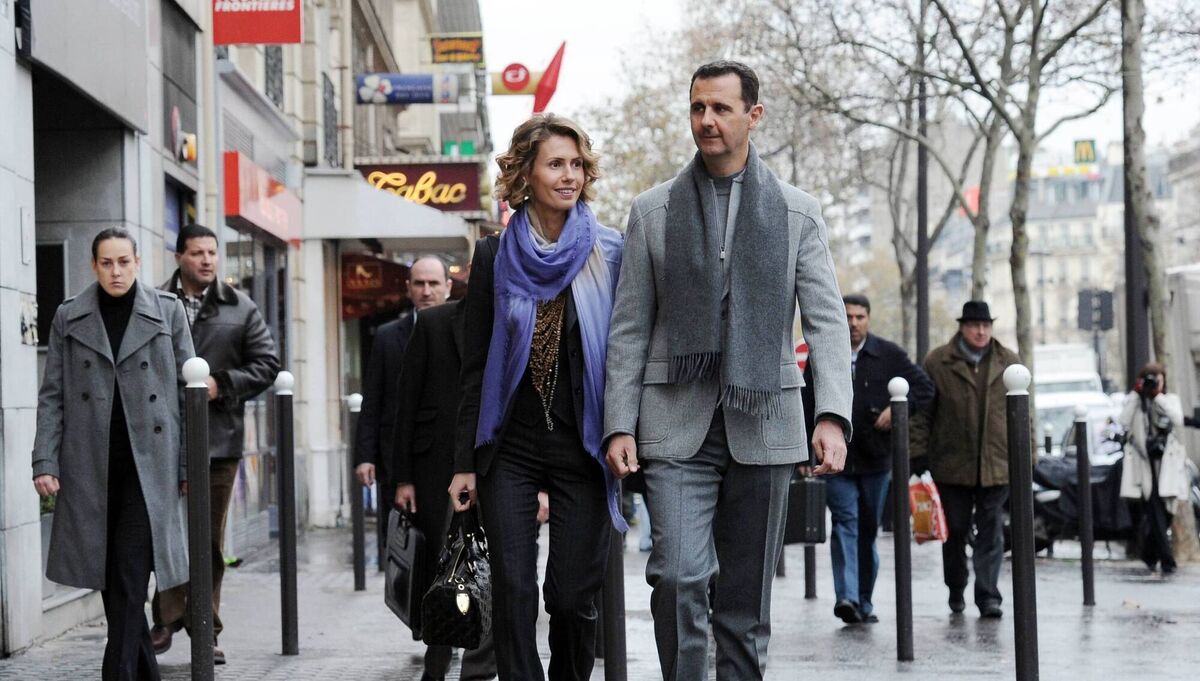
She was as brisk as a prefect, as on-message as a banker, as friendly as a new acquaintance at a friend’s cocktail party. She sounded like the kind of young Englishwoman you’d hear having lunch at the next table at Harvey Nichols.
She was on show, “on,” and delivered a well-rounded and glossy presentation of a cosy, modern, relaxed version of herself, her family, and her country to an American fashion magazine. With a London accent.
Her parents came from Homs. She’d grown up with two younger brothers in what she called Ealing and what the London press calls the less upscale Acton: she rode horses; her school friends called her Emma; she cut class to hang out on Oxford Street and got her degree in computer science at King’s College. She briefly worked at Deutsche Bank in New York, and was back in London at Morgan Stanley, about to take up an MBA at Harvard, when, on holiday at her aunt’s in Damascus in 2000, she remet Bashar al-Assad, a family friend. She was 25, he was 35.
She said she began to go to Damascus on weekends to see the president’s son. The word president rang as glamorous in her mouth as movie star. The word dictator never got in.
“You don’t plan to do this,” she said. After Hafez al-Assad died and Bashar became president, she quit her Morgan Stanley job and moved to Damascus. They married, and now had three children: Hafez, nine; Zein, seven; and Karim, who was about to turn six.
She liked secrets. Their wedding, she said in a conspiratorial tone, was held in secret, its exact date still private. She spent her first three months as Mrs Assad travelling through Syria with people who, to her delight, did not know who she was.
She was not wearing a wedding ring. Her husband did not either. “When you meet him, you’ll understand why,” she said. It was a little coy. She wanted to tell me about Massar, the series of youth “discovery centres” she was setting up.
“Massar in Arabic means path, destiny,” she said, “and destiny is created by the choices you make. Our project is about empowering this generation of young people to become active citizens, able to be part of the change the country’s going through.”
Almost half the Syrian population was under 14, she said, and Massar “Green Teams” had gone around the country to share its tenets of active citizenship with 200,000 children.
Wednesday I sat with Holtzman, unfed, through long meetings about fundraising for the Syria Trust.
“Doesn’t she stop for lunch?” I asked one of her aides.
“Never,” the aide said proudly.
Asma unwittingly gave me a glimpse into the Assad way of thinking: “I told my kids yesterday there’s a journalist going to be writing about me,” she said, “and my eldest, Hafez, asked, ‘What’s she going to say?’ And I said, ‘I don’t know.’ And he asked, ‘How can you get her to write about you if you don’t know what she’s going to say?’”
I was told there was no crime in Damascus. A few days later, on a pretext involving wooden spoons, I returned to the souk alone except for a driver I could not shake. I think I saw why there was no crime.
A mysterious metal box on wheels was parked outside the souk. It was about seven feet long, six feet high, with one barred window in the back. Its surface was dangerously unfinished, raw, full of metal splinters. It looked like a mobile prison. Later, I asked a local about the box. He said he’d never seen such a thing.
That night, Sheherazade was going out to dinner and Holtzman was in bed with food poisoning. I ate a bowl of stew in my hotel room and uploaded photos and reference videos to an American website. I used the Ethernet cord from the bureau drawer.
The next day Sheherazade called, sounding like a very old man with a sore throat. “I ate salad last night,” she said, “and I had the driver take me straight to the hospital. They pumped my stomach.” The first lady was making lunch at the presidential residence. It would be fondue, the family’s favourite.
Holtzman and I set off for the old apartment of Hafez al-Assad, which they had redone, over five years, into three stories of modern, child-friendly open space.
Both Assads were in jeans and sweaters. Bashar turned out to have a neck so long that he looked like something you might glimpse breaking the water in a Scottish loch. He spoke with a slight lisp. He showed me his cameras, and showed me framed photos he’d taken on family holidays in Qatar. He didn’t strike me as much of a monster.
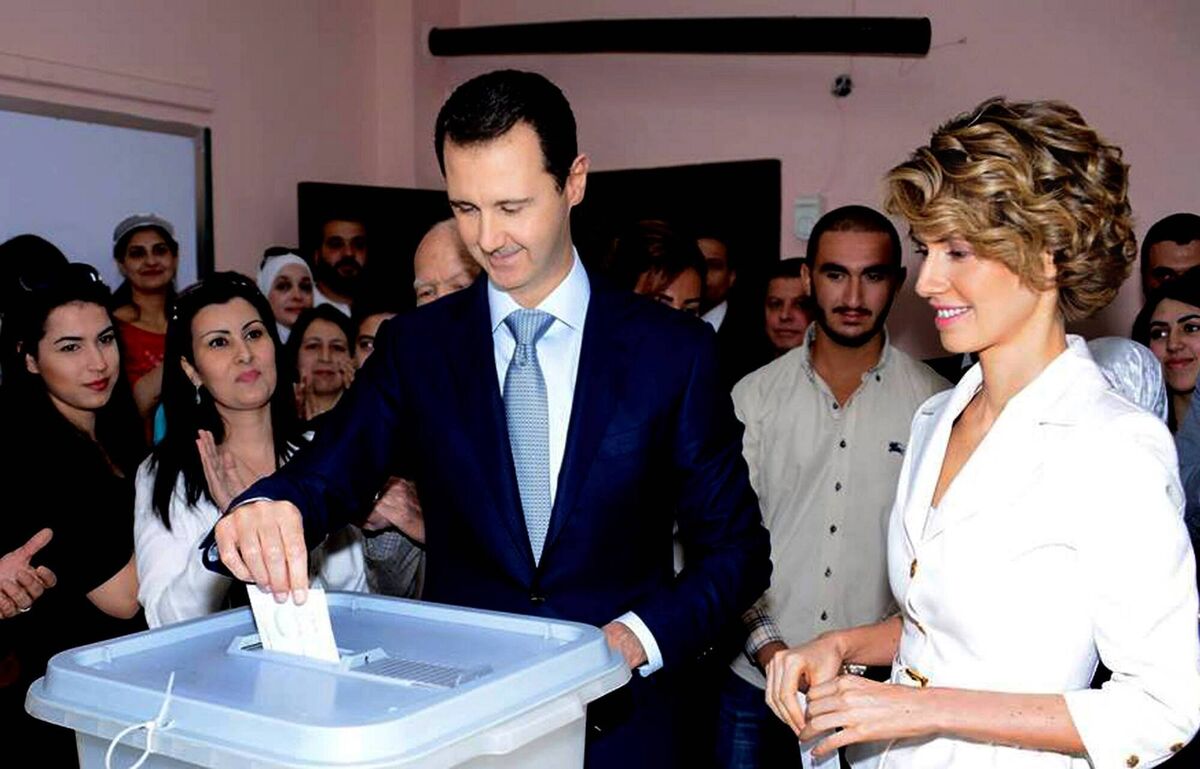
And he wanted to talk. I thrust the recorder at him and asked the most innocuous question I could think of.
Why had he wanted to become an eye doctor?
“Because it’s never an emergency,” he said. “It’s very precise, and there is very little blood.”
Never an emergency. Very little blood. He wanted to talk about computers.
Their daughter, Zein, a seven-year-old with curly hair, watched Alice in Wonderland on her father’s iMac. Asma’s iMac faced a side window.
The entire back half of the apartment was glass, rising from the lower level through the main reception floor above, and perhaps even farther up. Other residential buildings with hundreds of windows had an unobstructed view of the Assads’ doings. The apartment was like a custom-built habitat in which a rich first family could go about its domestic life in front of a large audience.
I wondered how this meshed with the secrecy Asma seemed to prize. I wondered who lived behind all those windows out there, and who they worked for.
Nosy neighbours, Asma said, had commented on their orange seating area. “This curiosity is good,” said the president. “Even if you want to be secure, you have to choose between being secure and being ... psychotic.”
The kitchen, at the opposite end from the windows, was the only place that wasn’t exposed to public view.
Asma pulled open three boxes of fondue mix. The base of the saucepan she used was bright and brand new. The president attempted to ignite a little can of Sterno with a match. “I’ve never tried it, this is the first time,” he said.
If this was a set, the props were well chosen: rubber boots and slickers piled by the lower-level door, a collection of completed Lego projects — trucks, buildings, a shark, all perfect — lining the edge of the plate-glass walls, a decorated Christmas tree. There was no staff to be seen, no nannies, maids, or cooks. Friday, the staff ’s day off ?
The nine-year-old, Hafez, asked sharp questions about the workings of Congress. He was blond, like his brother, Karim, who, the first lady reminded me, had just turned six the day before.
I had brought nothing. I rooted in my bag for something that could pass as a birthday present for a six-year-old. Aha. Star Wars flash drive. R2-D2, blue and white.
It was all I had. I showed R2-D2 to Holtzman, who said “Why not?” I asked the president if I could give his son a Star Wars flash drive of mine. He asked if I wanted to clean it up before I handed it over, and led me to his wife’s iMac.
I put the R2-D2 flash drive in the socket, and a Word document popped up on her screen. I wasn’t going to open the Word document with the president of Syria leaning over me.
As far as I could remember, it was a few transcribed lines about her taste for mathematics. But had I added anything more personal? Had I let rip about the security, the secrecy? About the metal box outside the souk?
I sat in his wife’s chair, wondering what to do. The president suggested I might want to put the document in the trash. I pulled it to the trash. “Empty it,” he said. He did. I didn’t dare look at Asma. I handed the R2-D2 flash drive to Karim, who was only mildly impressed.
We all clustered around the dinette table in the kitchen and dipped squares of bread into the fondue. Assad told jokes; they weren’t funny. Everyone laughed.
After lunch, Asma announced we were going to Massar in Latakia.
It was December 17, 2010. In Tunisia that day, the Arab Spring began when Mohamed Bouazizi, a 26-year-old street fruit vendor, set himself on fire.
We arrived in Latakia in sleet; it was sleek, well designed, and looked expensive. It was also noisy and crawling with kids.
They all stood up when Asma came in, and then cleared their throats and pulled at their sweaters and debated and argued and proudly showed off for their first lady.
Dressed like them, in jeans and a cardigan, she made an announcement.
She said: “There isn’t enough money for Massar, and this centre has to close down so that we can open another further up the coast.”
Boys and girls went silent. Some cried.
A boy stood up. The translator whispered: “He says, ‘I understand why this should happen, but it’s not fair.’”
Asma al-Assad said: “What about we fire the person who gave me this bad idea to close this centre?”
Another boy responded: “Let’s debate with him instead.”
She spoke again, this time with a big smile. The translator relayed:
“Now she’s saying that this centre isn’t really closing. It was just a test to see how much they cared.”
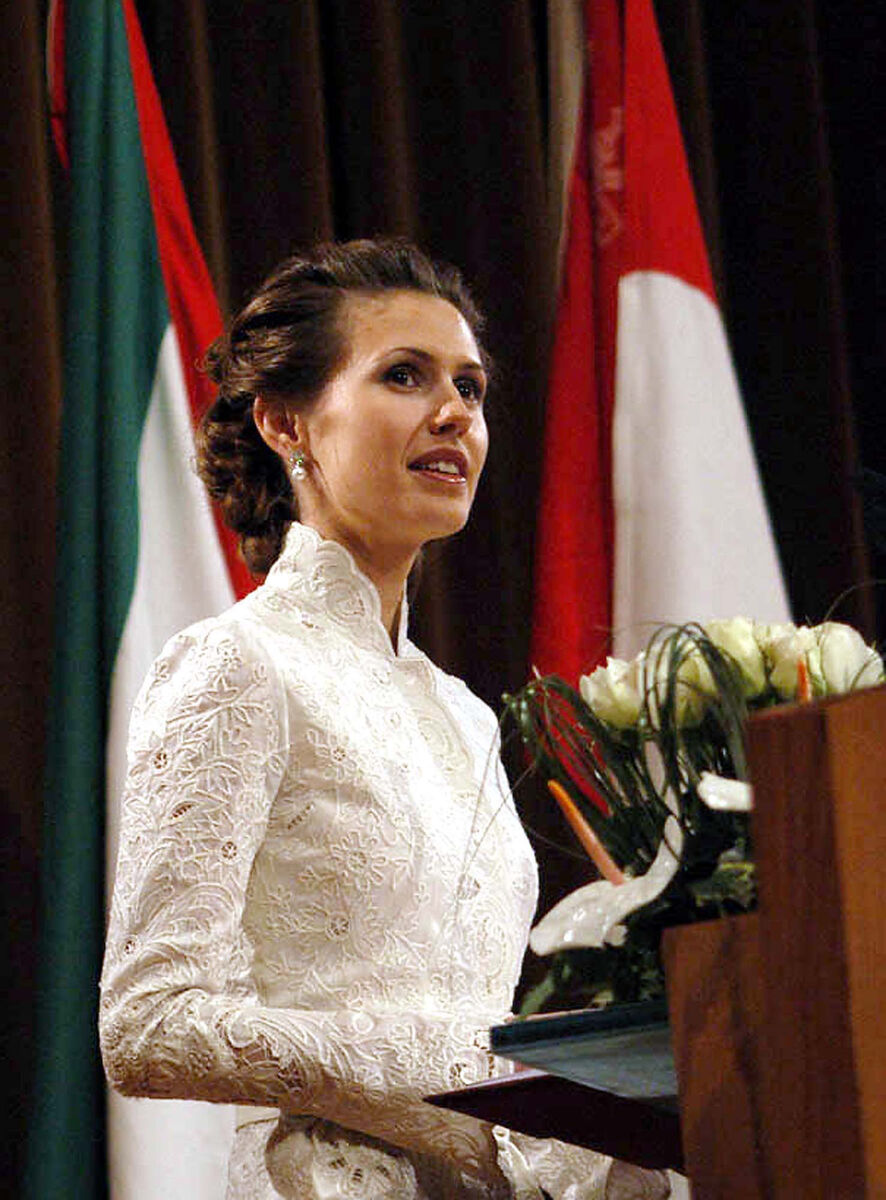
It took a moment before the kids showed any joy or any relief. The little ride they’d just been on was no fun.
I wandered out among the kids. Boys clustered around me, sweet teenagers. They wanted to know everything about New York and movies.
More teenagers clustered around Asma as she headed for the door. She didn’t seem to want to leave.
I asked her why she’d made the fake announcement about closing the Massar centre.
“There was a little bit of formality in what they were saying,” she said. “It wasn’t real — it was just nerves, or respect. So the idea was to get them out of their comfort zone, throw them off. I do it all the time. We need to get past the formalities if we are to get anything done.”
Back in my hotel room, I found the Ethernet cable ripped out of my laptop so violently that the plastic tab on the end had broken off.
The next day, December 18, demonstrations broke out across Tunisia as Mohamed El Bouazizi lay in a coma in hospital, dying of his burns. Snowstorms in London trapped me in Damascus for two more days.
I attended a concert. Two hundred children sang carols, Broadway hits, and Arabic rap. The president shook a little bell to ‘Jingle Bell Rock’.
I found myself in the opera-house foyer with the Assads.
“Do you understand now?” Asma asked, looking at her ring finger and then at her husband.
“Yes,” I said. I understood nothing. That was our parting.
I sat in the hotel bar with the French ambassador and asked what was really going on in Syria. He took the battery out of my Syrian cell phone and then did the same with his. This must have set off an alert, because suddenly Sheherazade materialised in front of us.
The ambassador drew maps of Syria’s shifting boundaries, with dates.
The next day Sheherazade said: “We don’t want you to talk to the French ambassador.” “You can’t talk to me that way,” I said.
When I opened my laptop at the Vienna airport on the way back to New York, an icon on the screen announced itself as the server for someone named Ali.
I arrived in New York on December 21, 2010, and quarantined the compromised laptop.
I watched Al Jazeera on my other computer as I transcribed. A small uprising in Algeria at the end of December was quickly squashed. In Tunisia on January 4, 2011, Mohamed Bouazizi died of his burns, and the country erupted.
I watched the protests in Lebanon, Jordan, Oman, and Saudi Arabia. In my earpiece as I transcribed, I heard the voice of Asma al-Assad talking, on and on, about empowering children to build a civil society. I watched Al Jazeera constantly. I didn’t want to write this piece. But I always finished what I started.
I handed in the piece on January 14, the day President Ben Ali fled Tunisia. “The Arab Spring is spreading,” I told Vogue on January 21. “You might want to hold the piece.”
They didn’t think the Arab Spring was going anywhere, and the piece was needed for the March “Power Issue”.
I got an expert to clean Ali out of the laptop.
On January 25, protesters massed in Cairo’s Tahrir Square. Sunni Muslims in Lebanon staged a “day of rage” against Hezbollah.
On February 11, Hosni Mubarak was overthrown in Egypt. There were protests in Yemen, Sudan, Iraq, Bahrain, then, unbelievably, in Libya.
I asked Vogue’s managing editor if we could meet to discuss how to handle the Assad piece. A meeting was held, without me. I was asked not to speak to the press.
On February 25, as Libyan protesters demanded an end to Gaddafi, my piece on Asma al-Assad was published online at Vogue. They had excruciatingly titled it “A Rose in the Desert”.
I was attacked as soon as it went up. How dare I write about Asma al-Assad? By describing Syria’s first lady in Vogue, I had anointed her.
Syria stayed quiet until the middle of March, when a small incident set off the horrifying massacres. In a town called Daraa at the end of February, 15 children broke the country’s silence.
The boys, ages nine to 15, wrote, “The people want to topple the regime” on the walls of their school.
The police arrested them. When they had not been released after two weeks, their families staged a protest on March 15. At a second protest, on March 18, Syrian forces fired on the crowd and killed four people.
The boys were released from prison. Their families saw that they had been tortured and took to the streets. On March 23, a grenade was hurled into a crowd of protesters in the Daraa mosque.
Assad’s forces began to kill Syrians every day. They fired on mourners at funerals, men gathered in mosques, women and children in the street.
They arrested more children. They tortured more children.
On April 29, a chubby 13-year-old boy named Hamza Ali al-Khateeb was arrested during a protest in Saida, near Daraa.
On May 24, Hamza’s mutilated body was returned to his parents. Bashar al-Assad blamed the uprising of the Syrian people on terrorists from both al Qaeda and the United States.
Through 2011, I wondered about Asma al-Assad, the woman who cared so much about the youth of Syria. How could she not know what was happening? How could she stand by and do nothing while the Syrian regime ate its young?
In May of 2011, Vogue took the piece off its website. I kept my word and did not speak to the press. At the end of the year, my contract was not renewed.
I was now free to react to the Syrian carnage with the only medium I had: Twitter.
Last December, Bashar al-Assad told Barbara Walters the truth on ABC: “No government kills its people, unless it’s run by a crazy person.”
I wondered what their massive windows looked like now, and whether they still lived on show to the gaze of thousands.
Was Asma locked up, or back home in Ealing, or Acton?
When pictures of her appeared making charity packages with her husband or voting — voting! —in a referendum, I wondered if she was drugged, compliant, indifferent, complicit.
Most of all, I wondered about Massar and her project to empower six million young Syrians to become “active citizens”.
Was she conscious that by empowering the children of Syria to take charge of their destinies, she was feeding them to her husband’s torturers?
What is consciousness when you are first lady of hell?
I will never know.
- This is an edited version of an article that first appeared in Newsweek. This article was first published in the Irish Examiner on August 12, 2012.




